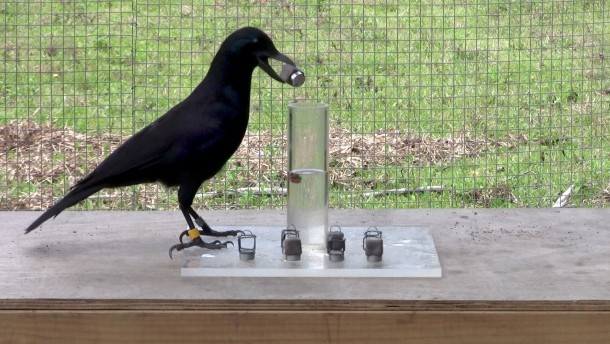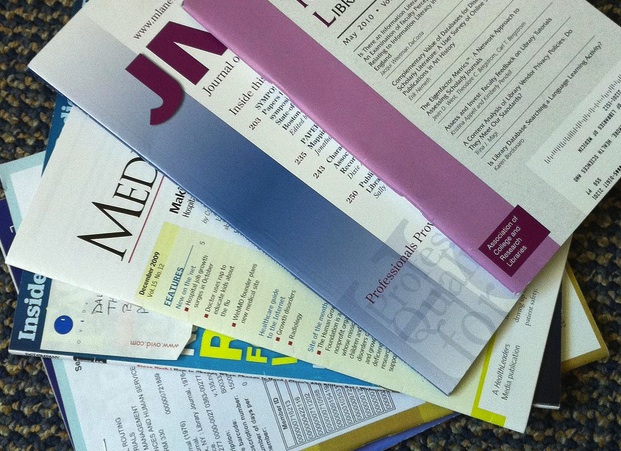Funders punish open-access dodgers
82% of NIH papers are publicly accessible a year after they are published.

Send us a link
82% of NIH papers are publicly accessible a year after they are published.

"I co-founded the PLOS in 2002 because I believed deeply that the open access publishing model PLOS espoused and has come to dominate was good for science, scientists and the public."
Is Open Science already here? Not exactly. Open Science is more than a subset of projects that make data available or sharing of software tools, often because they received specific funding to do so.
Open Access, Open Science, Science 2.0 - die Titel, unter denen vom Internet eine Beschleunigung des Erkenntnisgewinns erwartet wird, sind vielfältig. Doch wem nützen die entsprechenden Techniken?

Should paywalls stand between the taxpaying public and publicly funded research? Congress recently decided that the answer should be "no."
Much of research in the US is inaccessible not only to the public, but also to other scientists. Fortunately, cheap open-access alternatives are not only possible, but already beginning to take root

Research Councils UK, the Wellcome Trust, the Austrian Science Fund (FWF), the Luxembourg National Research Fund (FNR) and the Max Planck Institute for Gravitational Physics worried about high open access fees charged by “hybrid” journals could refuse to pay fees above a set threshold, a report suggests.
Universities are drowning in digital information. It's time senior leaders made openness – and its consequences – their concern.

The Finch Report , the Government's acceptance of its key recommendations, the new RCUK policies on open access, and the consultation by the Funding Councils on possible open access requirements for material to be submitted to the REF expected in 2020, have changed the open access landscape in the UK.
Once upon a time, it was common for scientists to receive letters from researchers working in other institutions, asking for reprints of papers they had published ...

Tensions as open-access initiative goes live — without the field’s leading journal.
Academics fear secrecy will hinder research into the science behind policy decisions.
Schulterschluss in der Teilchenphysik
The Congress of Argentina recently passed a landmark law making publicly funded science and technology research publications free and open access.

Researchers have been receiving notices from Academia.edu with takedown requests from Elsevier.
Leading academic journals are distorting the scientific process and represent a "tyranny" that must be broken, according to Randy W. Schekman who has declared a boycott on the publications.

People are denied access to research hidden behind paywalls every day. This problem is invisible, but it slows innovation, kills curiosity and harms patients. This is an indictment of the current system.
Scientific articles written by Dutch researchers must be accessible for everyone to read free of charge from 2016.
Rather than simply demanding more open science, we should remember closure is a quite normal part of science, and instead look in detail at what's closing, when, why and to whom?
Elizabeth Marincola, PLOS's chief executive, says that the future of science publishing is not in branded, highly selective titles. Instead, she sees a world in which article metrics and community judgements help the cream of research to rise to the top.

What are biologists so afraid of? Physicists, mathematicians and social scientists routinely post their research to preprint servers such as arXiv.org before publication, yet few life scientists follow suit. A website that goes live this week is hoping to change that.

Building the Models and Analytics for an Open Access Future.
In this essay, we describe why article-level metrics are an important extension of traditional citation-based journal metrics and provide a number of example from Article-level metrics data collected for PLOS Biology.
It's been just over a decade since the concept of Open Access first captured the attention of the scientific and scholarly research community.
This issue on Open Access marks the 10-year anniversary of PLOS Biology, and it's as good a time as any to pause and take stock of how the last decade.
I am interested in copyright law, and especially interested in the inefficiencies and loopholes that have developed in a majority of creative industries as they have undergone the shift from analog to digital formats.

Open access to research is still held back by misunderstandings repeated by people who should know better, says Peter Suber.
An open-source approach to the problem of producing an off-patent drug in enantiopure form serves as an example of how academic and industrial researchers can join forces to make new scientific discoveries that could have a huge impact on human health.
